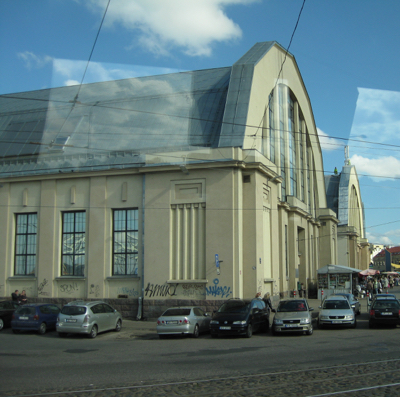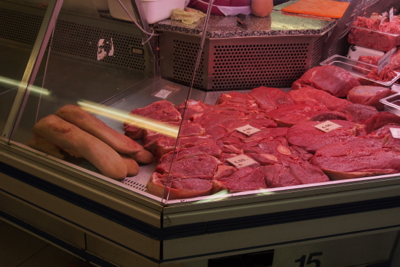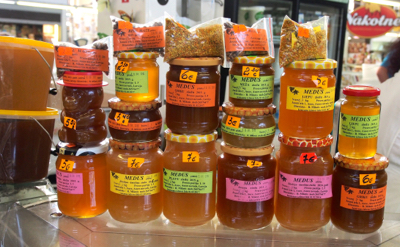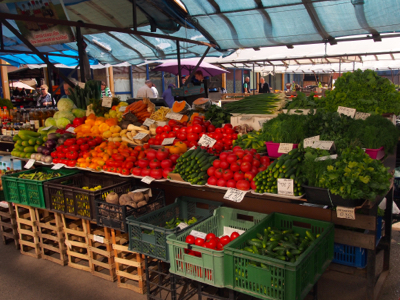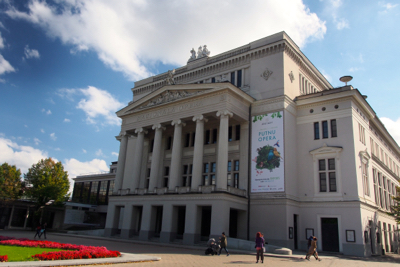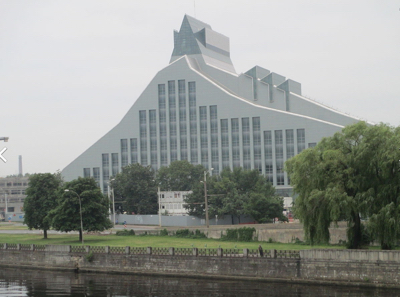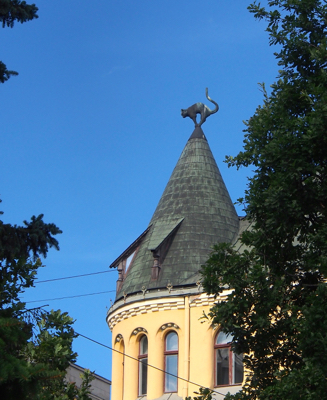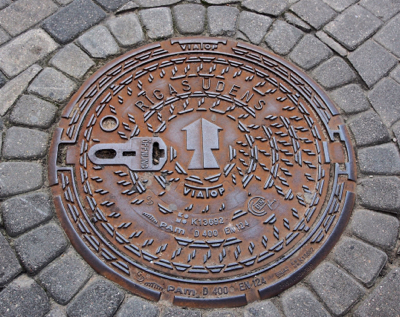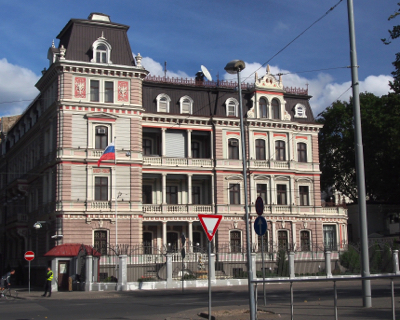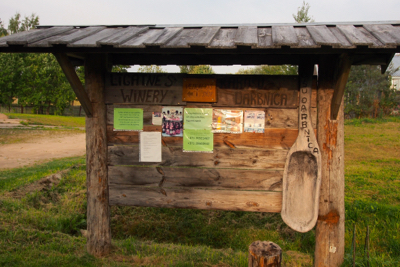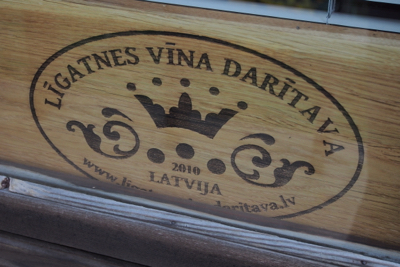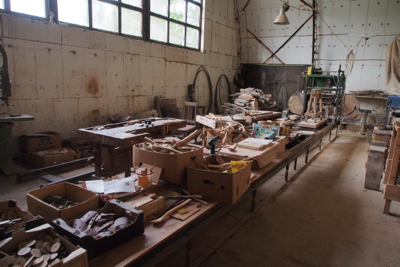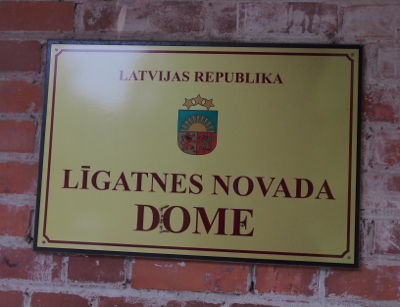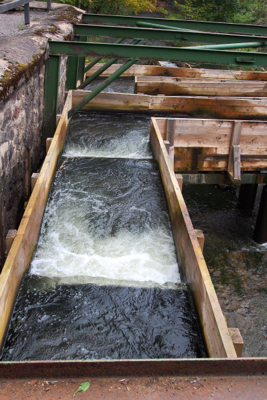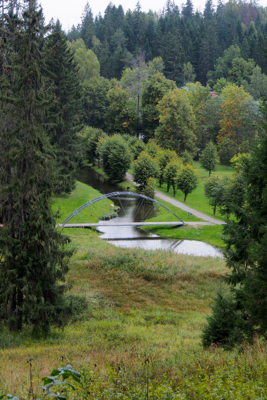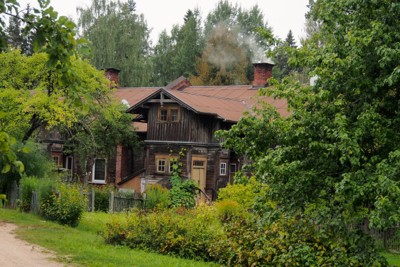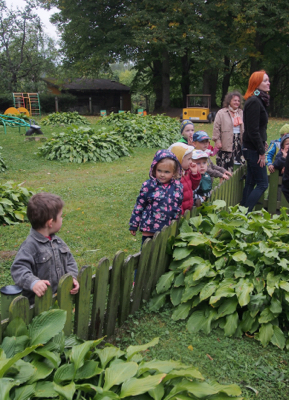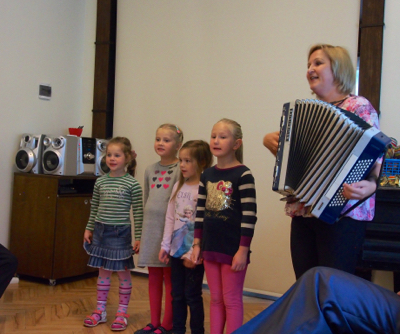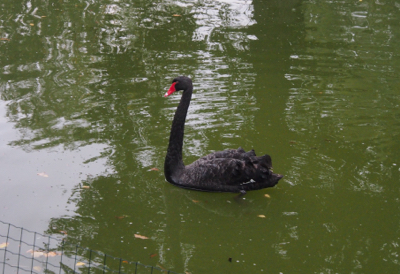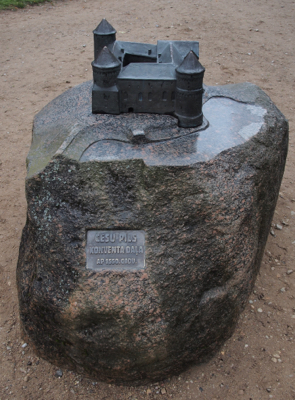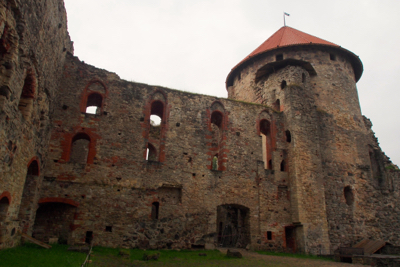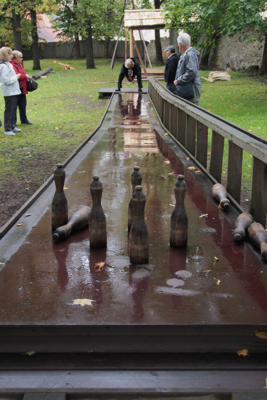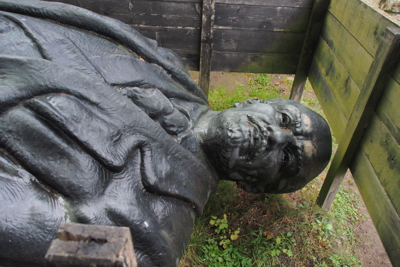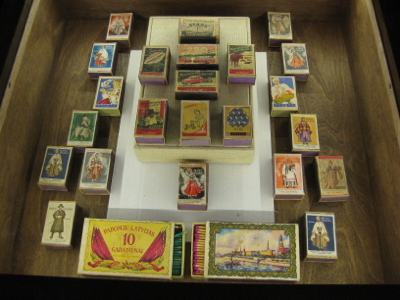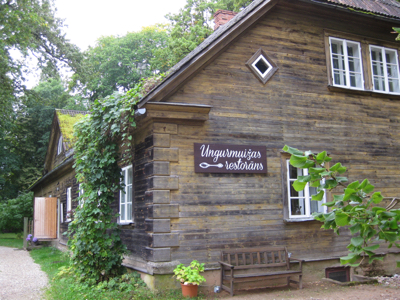Zepplin Central Market
We got on our bus and rode across the river to the Zeppelin Central Market. The four huge buildings were a German factory that built the helium filled zeppelins that were used to drop bombs in WWI. Now the market operates inside with a fish market, vegetables, meats, nuts and honey, and cheese and dairy, each in a different section. Outside were more farm stands and some flea market tables.
Zepplin Central Market
Zepplin Central Market
Zepplin Central Market
Zepplin Central Market
Zepplin Central Market
Latvian Academy of Science building
Latvian National Opera House
National Library of Latvia (from the Internet)
The Cat House - A local merchant was rejected from joining the Large Guild, so he built a fancy house across the street and put a black cat on the roof with its raised tail pointing to the guild. After a legal battle he was admitted to the guild so he turned the cat around to face the hall.
Russian Embassy in Riga
Tues., 9/15/15 – Riga and Ligatne Village
This morning's first stop was to visit a 10-acre family enterprise that made berry wines sold all over Latvia and also has a wood factory that makes spoons and cutting boards. Grapes don’t grow well in Latvia so the wines are made from 20 local berries – red and black currents, raspberries, dandelions, lilac, etc. They put out 20,000 bottles a year and they are bottled, corked, and labeled by hand. They also still have a small shop to make wooden spoons by hand and cutting boards on a computerized machine. We got to taste a red and black semi-sweet current wine that was very good and then a sweet raspberry wine that would have been good on vanilla ice cream!
Winery and wooden goods maker
Wine label
Woodshop
OAT trips always have a signature “Day in the Life of” where we visit a village – home, business, and/or school – to see how local people live. Today’s “learning and discovery” was in the village of Ligatne in the Gauja National Park. Ligatne was settled 200 years ago when two German men established a paper mill there, where there was water to run the mill and make electricity. The paper they made was of such good quality that the Russian tsar would use only it for all state documents.
Town of Ligatne
In town we met the mayor, a fourth generation citizen of Ligatne. He gave us a greeting and then a tour of town. We walked out to the fish ladder used by trout and salmon and then up wooden stairs and paths to see the caves in the sand cliffs. There are 333 caves used to store paper from the mill and to store grains and root vegetables because the cave rooms keep a perfect temperature and low humidity. We walked through one of the areas with apartments for the workers.
Gauja National Park - Fish ladder
Gauja National Park - Fish ladder
Gauja National Park - Caves in cliffs
Gauja National Park
Gauja National Park
Gauja National Park
Next we visited the town kindergarten. The school is housed in the home of the former director of the paper mill. Children from ages 1 ½ to 7 stay there from 7:30 to 6 PM. They are given three meals, lessons, and naptime five days a week all year long. It costs the parents only 2.18 Euros a day to pay for their food. The director of the kindergarten is a music teacher and she had four 5 and 6 year-olds to sing for us while she played and accordion, after which we toured the school.
Next we went to a home-hosted lunch. One group stayed near the school while our group was driven 20 minutes away. Our host spoke very good English but his mother and his wife only spoke Russian. The house had a wood fired cooking stove with a bread oven that also heated most of the house. They grow their own vegetables. The host is a software engineer who works from home. We had a vegetable soup with ham and lentils then lots of chopped fresh vegetables, a chicken thigh and boiled potatoes with cookies, ice cream, and a tart for dessert. It was very good and filling.
Ligatne Kindergarten
Ligatne Kindergarten
Ligatne Kindergarten
Home-hosted lunch
Wed., 9/16/15 – Riga to Tallin, Estonia
This morning, we stopped in Cesis, Latvia, which has the oldest brewery - from the 16th c. and started by Germans. The town has a castle and runs Medieval Festivals. The castle's five towers were referred to as Tall Hermans and the Fat Margaret. We walked past a pond with two black swans and into the castle ruins. The town of Cesis has a church from the early 1200’s. It was Catholic until the 1500’s when it became Lutheran and has been Lutheran ever since.
Black swan
Model of Cesis Castle
Cesis Castle
Cesis Castle
Cesis Castle
Some of our group tried their hand at Medieval bowling with a round wooden ball and nine large pins. We looked at a statue of Lenin lying on the ground. At one time all cities and towns had such a statue but in 1990 they were all knocked down in the non-Soviet countries.
Medieval bowling
Medieval bowling
Reclining Lenin
After our castlevisit, we drove a little way out of Cesis for lunch at a German nobleman’s manor, Ungurmuiza. The manor house had a museum with dolls, stuffed bears, and matchboxes. The dolls are much different than our.
Ungurmuiza - lunch and museum
Ungurmuiza museum
Ungurmuiza - lunch
Latvia-Estonia border
| Return to Top | Return to Itinerary | Return to Trips page to view other trips | Return to Dreamcatcher Home Page |
